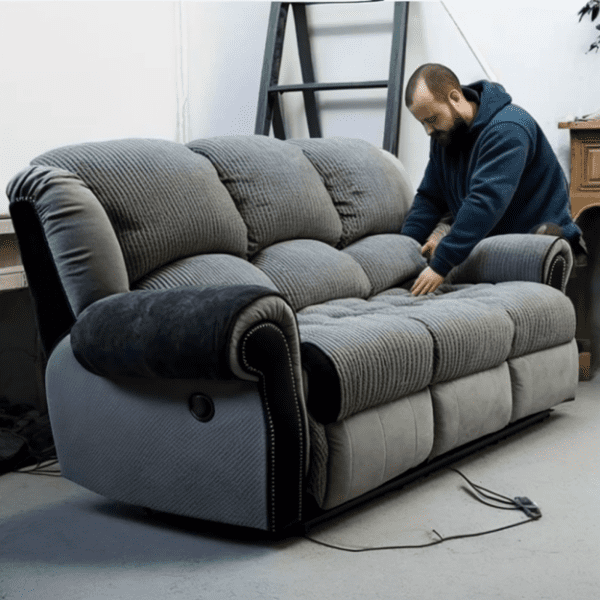Assessment and Diagnosis
Before starting any sofa repair, thoroughly assess the condition of your sofa. Identify the specific areas that require attention, whether it’s a broken frame, sagging cushions, torn upholstery, or damaged springs. Understanding the scope of the repair will help you plan and gather the necessary materials.
Gathering Materials
Once you’ve identified the issues, gather the required materials. This may include replacement upholstery fabric, foam padding, wood glue, screws, and any specialized tools needed for the job. Having everything on hand will streamline the repair process and minimize downtime.
Repairing the Frame
If the sofa frame is damaged, start by reinforcing it. Use wood glue to mend any broken pieces and secure them with screws. Check for loose joints and tighten them to ensure stability. Reinforcing the frame is crucial for the long-term durability of your sofa.
Fixing Sagging Cushions
Over time, sofa cushions may lose their firmness and sag. To address this issue, consider adding new foam padding. Measure the dimensions of the cushions and replace the existing foam with a high-density foam of the same size. This simple fix can significantly improve the comfort and appearance of your sofa.
Upholstery Repair
Torn or worn-out upholstery can be a common problem. For minor tears, use a fabric patch or adhesive to mend the damage. If the upholstery is severely damaged, consider reupholstering the entire sofa. Choose a fabric that complements your décor and is durable enough to withstand daily use.
Sewing and Stitching
If your sofa has fabric seams that are coming apart, use a sturdy needle and heavy-duty thread to sew them back together. Reinforce the stitching on any loose buttons or embellishments. This simple sewing can prevent further damage and extend the life of your sofa.
Spring Replacement
If your sofa has sagging or broken springs, replacing them is essential for restoring support. Measure the length and gauge of the existing springs, and purchase replacements accordingly. Use pliers to remove the old springs and secure the new ones in place. This step is crucial for maintaining the structural integrity of your sofa.
Regular Maintenance
To prevent future issues, implement a regular maintenance routine. Vacuum your sofa regularly to remove dust and debris. Rotate and flip cushions to ensure even wear. Address minor repairs promptly to prevent them from escalating into more significant problems. Regular care will keep your sofa in good condition for years to come.
Professional Assistance
If you’re unsure about tackling certain repairs or if the damage is extensive, don’t hesitate to seek professional assistance. Upholsterers and furniture repair experts have the skills and expertise to handle complex repairs, ensuring that your sofa is restored to its original condition.
Protective Measures
Finally, consider using protective measures to prevent future damage. Invest in slipcovers or furniture covers to shield your sofa from spills, stains, and general wear and tear. These preventative measures can significantly prolong the lifespan of your sofa and reduce the need for extensive repairs.

